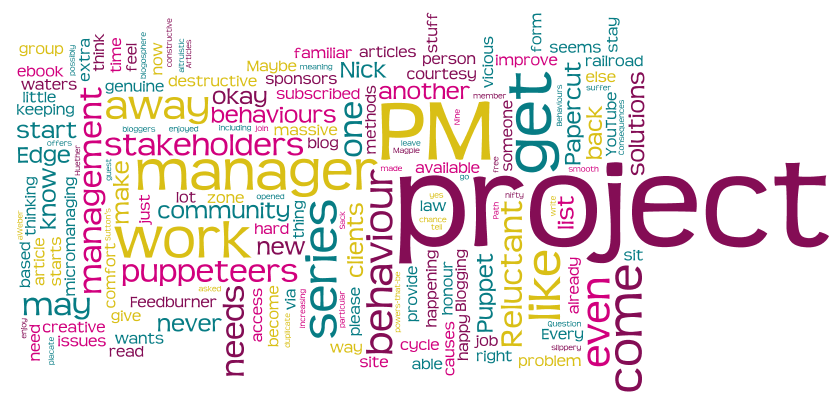I recently came across an opinion piece by Liza Lowery Massey called Poor Project Management Dooms Many IT Projects.
I really liked it. She had some great points in the face of high rates of IT project failure, and inconsistencies between best practices and poor results. What particularly resonated with me were her comments regarding how receptive and mature organizations are towards project management.
Here’s my personal take on it. Nobody, not even the most visionary, most knowledgeable, most strong-backed person can carry the weight of the world on their own. I think few would argue that statement, yet as project managers, how much of our time do we spend educating and reminding stakeholders of the need for their ongoing involvement?
There is a desire I’ve seen countless times (as I’m sure you have) to slough off all accountability and responsibility for the success of a project to the project manager in charge. PMs will accept it, because that’s what we’ve built our careers doing.
Take the following dialogue:
“Not a problem,” says the project manager.
In that simple transaction, the executive stakeholder has washed their hands, and the PM has allowed it. Variants of this conversation have begun, I would say, roughly 80% of the projects I’ve seen throughout my career. I’ve been dumb enough to take jobs under those circumstances, and I’ve lost jobs because I effectively suggested, “sure I’ll take the job but we need to have some changes ’round here before we start”.
As I got older and (allegedly) wiser, I stopped with the “not a problem” part, and challenged the “I just want it handled” part. Sometimes my challenge would result in disgruntled, but present, stakeholder availability. That helped (although geez don’t do me no favours, eh?) But sometimes, my challenge would result in stakeholders opening their eyes wide to the light of possibility. These champions would recruit others, go back to their respective organizations and shape them into resilient machines that would be receptive to my efforts.
On occasions where this happened, I met with not just tremendous success, but frequently our projects overachieved in some fashion. When we encountered problems, we cut through them like butter…indeed these projects were effortless to pull off, invariably resulting in prosperity for everyone involved.
From these experiences and comparisons, I’ve learned that for large projects to stand the highest success rates, organizations need to be project-aware. Everyone, from the highest-paid executive, right down through entry-level need to understand the vagaries of projects and be prepared to adapt to their influences.
That’s not a job for one person: that’s a culture shift.
As I say this, I feel like I’m providing reasons why the project manager shouldn’t have to be accountable. That’s not my intent. What so many fail to realize is, a project of any complexity needs more than just one person fighting on its behalf. That’s a recipe for failure! If the PM is successful under those conditions it may seem like they’ve only just met expectations, but the reality is they’ve done so much more. Likely at great cost to themselves.
It comes down to this: a project manager can spend their time diving into risk analysis, tearing through the project looking for issues to resolve, knocking down barriers and filling gaps (in other words, doing his or her job).
Or, the project manager can spend vast chunks of his or her time negotiating with other people why they should get involved, or make changes to their workflow, or get resources briefed and ready on the side as backup, or even just read their status reports.
Project and portfolio success means so much more than just hiring the best to do the best. While projects are transient in nature, they leave behind a legacy the organization has to live with. Stakeholders will have to contend with that legacy long after the project has closed down. That suggests stakeholders need to have every bit as much ownership of the work as the PM at the helm. They need to ensure the very fabric of their organizations are resilient enough to handle the demands of projects taking place within their walls.

